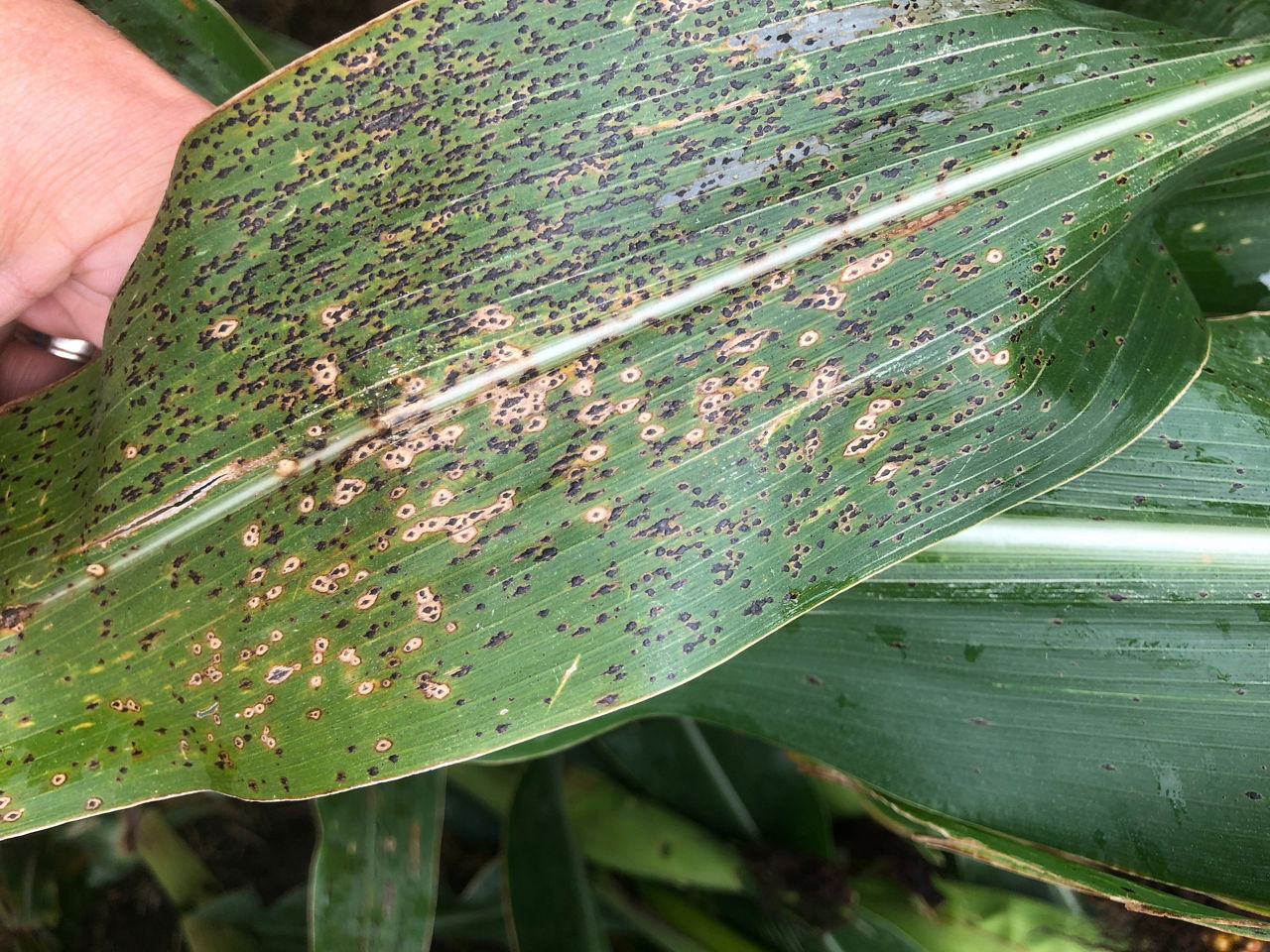Tar Spot Update
February 28, 2024
Tar spot has become one of the most discussed corn diseases in the Midwest in the agriculture community and it continues to be a larger concern across the United States due to its potential to reduce yield. Tar spot was first identified in 2015, but it now touches nearly every Midwest state and even some in the Southeast. Tar spot is a fungal disease that is distinguishable by many small, raised black spots that cannot be rubbed off the plant tissue (Figure 1). It is easily identifiable and hard to mistake from other corn diseases.

Environmental conditions can affect the severity of tar spot. Like many other fungal diseases, tar spot is more prevalent in humid conditions. Many saw dramatic yield reductions in 2021 due to the extended cool/wet weather late in the summer months. Infection can occur throughout the corn plant’s lifecycle, but tar spot usually appears after the R2 growth stage. Due to the growing conditions in 2023, tar spot was less of a concern but even with the Midwest’s extremely dry conditions it was still present and deserves attention.
Tar spot is here to stay, so how do we best manage our fields going forward? There are many resources available to growers that help track risk and give recommendations on field scouting. Two good resources are the Disease Risk Maps produced by Bayer and the “Tar Spotter” app from the University of Wisconsin. In-field scouting throughout the season can help with making decisions going forward and these resources help align focus on what fields need attention. Since tar spot overwinters in soil and residue, fields that have had the disease in prior years or corn-on-corn acres should be scouted.
Fungicide applications and timing are important to help control the spread of the disease. If growing conditions are favorable for infection, two fungicide applications might be warranted. In most cases, a VT growth stage application should suffice with proper scouting. Tar spot tends to appear late in the growing season; however, if the infection intensifies in the early R growth stages, then a second fungicide application may be warranted. It is important to choose a fungicide that is labeled for tar spot control such as Delaro® Complete Fungicide and to control the disease before it moves up the plant. Yield reductions magnify when the disease reaches the ear leaf in early R growth stages.
Corn product selection can also be impactful for managing tar spot. Many agronomists and growers have observed products that perform better or worse in the presence of the disease. Field inoculation studies for tar spot are ongoing and are showing promising results. A 1 to 9 rating for Channel® brand products should be available in the near future. Until then, reliance should be placed on observations and discussions with your local agronomists. Be sure to scout your fields this growing season and manage your fields according to the growing conditions to help make the most impactful decisions.
Jared Courtney
Channel Agronomist
Sources:
Telenko, D. and Creswell, T. 2019. Diseases of corn: Tar spot. Diseases of Corn. BP-90-W. Botany and Plant Pathology. Purdue University Extension. https://www.extension.purdue.edu/extmedia/bp/bp-90-w.pdf
1110_349351